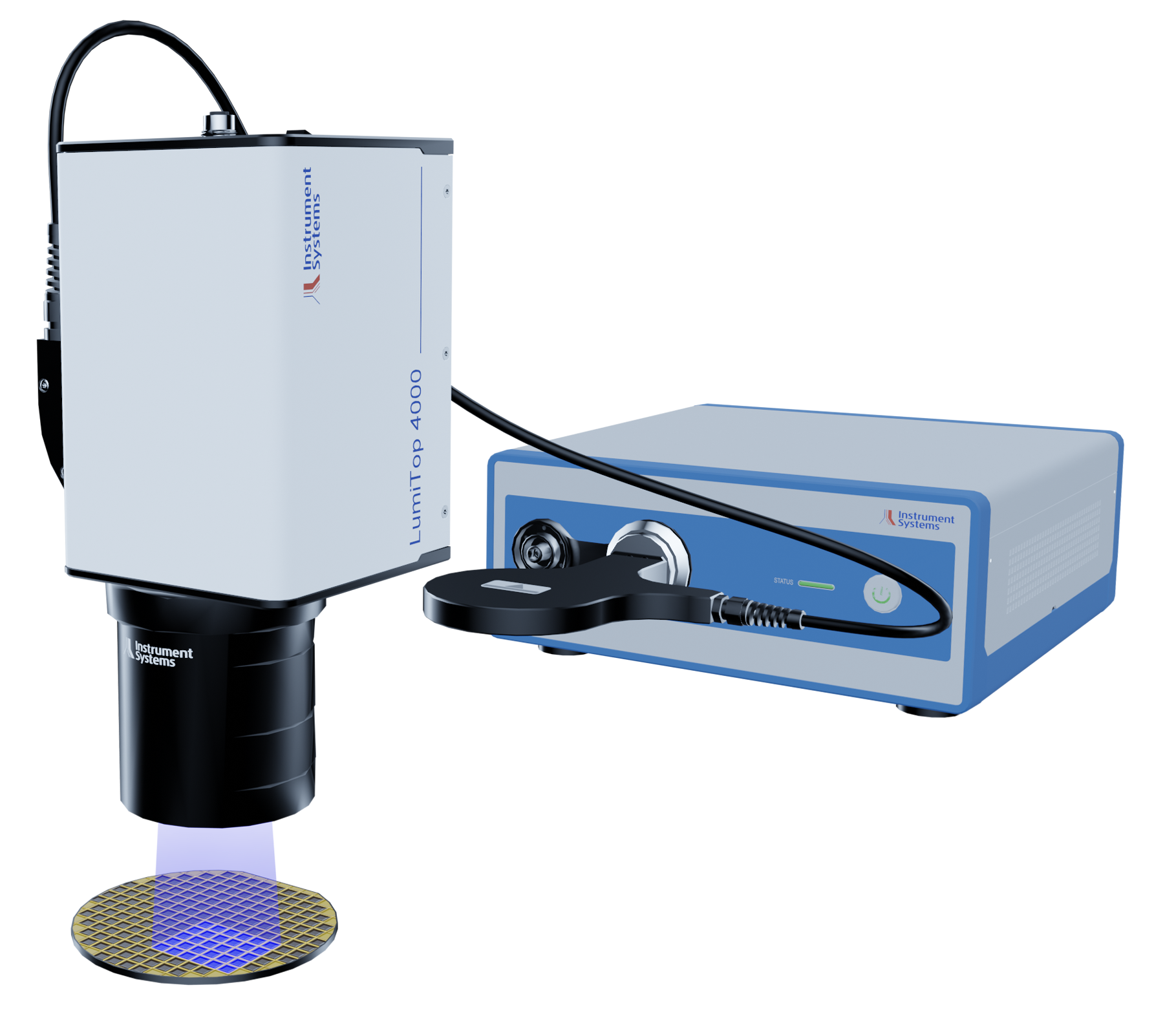Instrument Systems of the Konica Minolta Group introduces a camera-based measurement solution for Micro LED wafer testing that generates 2-dimensional, pixel-resolved optical analyses within given cycle times. The LumiTop 4000 has a resolution of 12 MP and can detect the smallest of defects and inhomogeneities on the wafer. Thanks to a 100 mm macro lens, the camera enables fast parallel inline analysis of all Micro LEDs on a wafer at a single test station.
Micro LEDs are renowned for being an exacting new display technology. According to the latest definition of LEDinside, Micro LEDs are smaller than 75 μm and without sapphire substrate. These tiny chips enable displays to deliver a broad color gamut, high contrast and extremely high resolution. Particularly in mass production, they present new challenges for the optical quality tests required at every stage of production including wafer level. This cannot be achieved with standard tests such as sequential testing.
For efficient testing of thousands of Micro LEDs on a wafer, the test procedure must be parallelized. The manufacturer is thus required to simultaneously contact as many Micro LEDs as possible. In addition, the optical inspection should be fast and accurate, and performed synchronous to the production flow. This functions only with a 2D measurement using specifically calibrated instruments to prevent measurement errors.

(Image: Instrument Systems)
The LumiTop family from Instrument Systems offer a solution combining 2D camera with a spectroradiometer that serves as a simultaneous reference measuring instrument for highly accurate readings. The new LumiTop 4000 with a 100 mm lens can be used for Micro LED wafer testing.
With a field of view (FoV) of approximately 1.0 by 1.4 cm it can measure many thousands of Micro LEDs in parallel with a minimum pixel size as low as 30 μm.
Join us at 2020 Micro LED Forum: Opportunities and Challenges for Mass Production of Emerging Display Technologies webinar to learn more Micro LED production breakthrough and market trends. Register now to get an early bird discount.






 CN
TW
EN
CN
TW
EN







